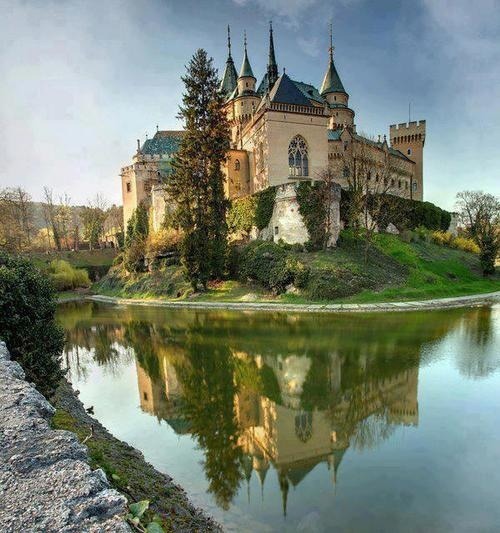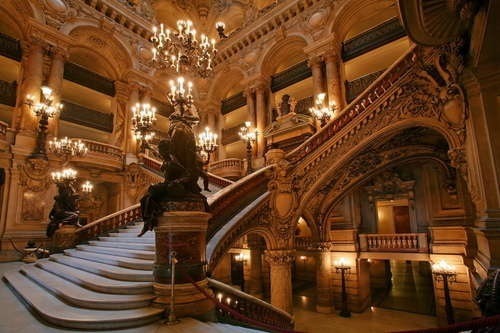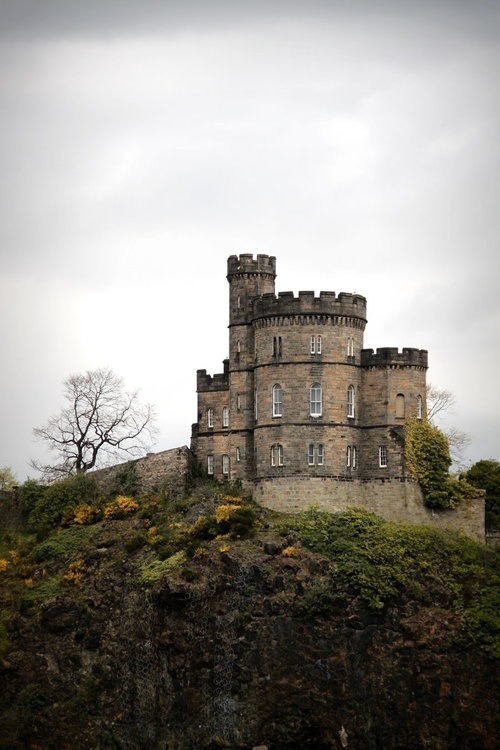Photo

What I find really fascinating about this is how these 3 men all lose hands in their stories, but they are expected to overcome this adversity and carry on living. In Biancabella and the Snake, when Biancabella loses her hands, no expects her to do anything; they expect her to roll over and die. Why is it than men the only ones who can be "strong enough" to deal with an injury like this?
Image adapted from: kabam1tzkidd
#Eng/Wgst 193#Biancabella and the Snake#Disney now owns Star Wars so I thought this would be appropriate#And then Jaime Lannister just for funsies
2 notes
·
View notes
Photo

Only 15% of protagonists in 2013’s top films were female.
23 notes
·
View notes
Text
Top Ten Truly Disturbing Fairy Tales
http://listverse.com/2012/12/05/top-10-truly-disturbing-fairy-tales/
I think it's important to note that even though Biancabella is blessed with beauty and whatnot, it ultimately brings about her (temporary) downfall. Because of her beauty, her evil mother-in-law decides to have her killed, and although her life is not taken, she loses both her hands and her eyes. Instead of fighting back, she decides to kill herself. It is her snake sister who ultimately saves her and restores her beauty.
I personally don't really like where the moral of this story ends up. It seems to be saying: "If you're pretty and bad things happen to you, do nothing about it and wait for someone else to fix the problem. Then when you get your looks back, you can have nice things again." I don't think this is the kind of message that young audiences should be getting from a fairy tale.
1 note
·
View note
Photo
Okay, so I'm not entirely sure how accurate this quote is (if Disney actually ever said it or not; I'm leaning towards the 'not' end here), and I certainly disagree that it is about Cinderella (she is one of the more useless Disney princesses), but I do believe in what the quote is saying. I think it's important for young audiences to know that they can't just wait around for things to happen - they have to be the ones to make them happen.

283 notes
·
View notes
Photo

I think this is a much better message than what most fairy tales, including Blanche Belle, are sending to young readers. You don't need to be dependent on your prince to come and save you - you can do it on your own, girlfriend.
From http://www.flickr.com/photos/tomgauld/5899833655/
1 note
·
View note
Link
I would like to speak to the princess part of this post. This is very true in Blanche Belle. She gets locked in the fairy's chateau, completely against her will, but does absolutely nothing to escape from it. She sits in captivity and feels sorry for herself and the situation she has suddenly found herself in, but she does nothing about it. I think it's important, especially for young audiences, to re-imagine the fairy tale tower. Have a princess or heroine or whatever you want to call her DO SOMETHING about her situation - fight back,
In fairy tales and fantasy, two types of people go in towers: princesses and wizards.
Princesses are placed there against their will or with the intention of ‘keeping them safe.’
This is very different from wizards, who seek out towers to hone their sorcery in solitude.
I would like a story...
107K notes
·
View notes
Audio
I think this song exemplifies everything that bothered me about Blanche Belle. She sat around and waited for her husband to come save her; their was absolutely no initiative on her part to get herself out of her bad situation. If she had been less dependent on a man to save her, she might have gotten out of there quicker.
The Frog Prince | Keane
You’ve wandered so far
From the person you are
329 notes
·
View notes
Quote
Imagine this:
Instead of waiting in her tower, Rapunzel slices off her long, golden hair with a carving knife, and then uses it to climb down to freedom.
Just as she’s about to take the poison apple, Snow White sees the familiar wicked glow in the old lady’s eyes, and slashes the evil queen’s throat with a pair of sewing scissors.
Cinderella refuses everything but the glass slippers from her fairy godmother, crushes her stepmother’s windpipe under her heel, and the Prince falls madly in love with the mysterious girl who dons rags and blood-stained slippers.
Imagine this:
Persephone goes adventuring with weapons hidden under her dress.
Persephone climbs into the gaping chasm.
Or, Persephone uses her hands to carve a hole down to hell.
In none of these versions is Persephone’s body violated unless she asks Hades to hold her down with his horse-whips.
Not once does she hold out on eating the pomegranate, instead biting into it eagerly and relishing the juice running down her chin, staining it red.
In some of the stories, Hades never appears and Persephone rules the underworld with a crown of her own making.
In all of them, it is widely known that the name Persephone means Bringer of Destruction.
Imagine this:
Red Riding Hood marches from her grandmother’s house with a bloody wolf pelt.
Medusa rights the wrongs that have been done to her.
Eurydice breaks every muscle in her arms climbing out of the land of the dead.
Imagine this:
Girls are allowed to think dark thoughts, and be dark things.
Imagine this:
Instead of the dragon, it’s the princess with claws and fiery breath
who smashes her way from the confines of her castle
and swallows men whole.
-------------------------------------------------------------------------------------------
I think this is really significant and important, not just for how we look at fairy tales, but how we view gender in general. In the two fairy tales that I read, the so-called "heroines" don't do anything to get themselves out of trouble; they sit around and wait for a man to save them. If society actually allowed women to feel empowered, then there would be more tales like these.
'Reinventing Rescuing,' theappleppielifestyle. (via theappleppielifestyle)
252K notes
·
View notes
Photo
What I like about these gender-bent Disney characters is the subtlety in which they are shown. It is very easy to imagine the action of their stories being done by either the masculine version on the right, or the feminine version on the left.










(( Side-by-side comparisons of these. :) ))
51K notes
·
View notes
Photo
Some of these pictures look a bit like what I pictured the fairy's chateau in the woods to look like in Blanche Belle.










82K notes
·
View notes
Text
Annotated Bibliography 4
Haase, Donald, ed. The Greenwood Encyclopedia of Folktales and Fairy Tales: G-P. N.p.: n.p., n.d. Print.
In the book complied and edited by Donald Haase, Elizabeth Wanning Harries wrote a section on Jean de Mailly. She writes that Millay's work draws heavily on the influence of female French writers of the time. Most of his stories most likely grew out of oral tales that he heard at salons. The influence is the female fairy tale writers may be the reason why his virtuous heroines are so well crafted. In fact, some of his earliest work was originally mistakenly attributed to a group of female writers.
Mailly was also influenced by Straprola (who wrote Biancabella and the Snake).
What is interesting about Mailly's story Blanche Belle is that the one fairy mentioned in the story is not a good fairy. Usually fairies are good and helpful, as exemplified by the fairies present in the works of the women writers who had such great influence over him. The creature who ultimately saves Blanche Belle is a male sylph - a creature that is noted to be even more powerful than the fairies.
0 notes
Text
Annotated Bibliography 3
Montoneri, Bernard. "The Fairies by Charles Perrault: sources, historical evolution, and signification." Print.
Bernard Montoneri's article discusses the fairy tales that influenced Charles Perrault's story Les Fées. Biancabella and the Snake was one of them. Biancabella tells the story of a girl who is gifted with special powers; rubies and other gems fall from her hair when it is brushed, and flowers spring from her hands when she washes them. It is the story of a girl who is gifted with virtues. Biancabella itself comes from the Greek story The Maiden who Laughs Roses and Weeps Pearls. These stories, with their virtuous heroines, had great influence over Perrault's work.
0 notes
Text
Note to Accompany Annotated Bibliography 2
Although Blanche Belle was not specifically mentioned in Claderone's article, it is worth nothing that the same principle could be applied. The marquise had a dream that she had sex with a sylph, a mythical creature, and then fell pregnant with its child. Although Blanche Belle was born as a normal human, magic was still involved in her conception and birth.
0 notes
Text
Annotated Bibliography 2
Calderone, Belinda. "The Monster Inside Me: Unnatural Births in Italian and French Fairy Tales." n. pag. Print.
In this article, Belinda Calderone discusses monstrous births in Italian and French fairy tales. In these unnatural births, the female body becomes the origin of these creatures, implying that the female itself can be monstrous. In most fairy tales, the queen/wife has sex with some kind of mythical creature or monster and gives birth to a half monster half human child. During the time that many of these stories were written, medicine had not advanced enough for people to understand that a woman could not get pregnant from having sex with an animal; people believed that these monsters were real.
In the case of Biancabella and the Snake, and Italian version of Blanche Belle, the queen does not actually have sex with any kind of monster, but when she gives birth, there is a snake wrapped around her daughter's neck. Calderone writes that often times it was not the mother's sexual acts, but rather her imagination, that led to these unnatural births.
1 note
·
View note


